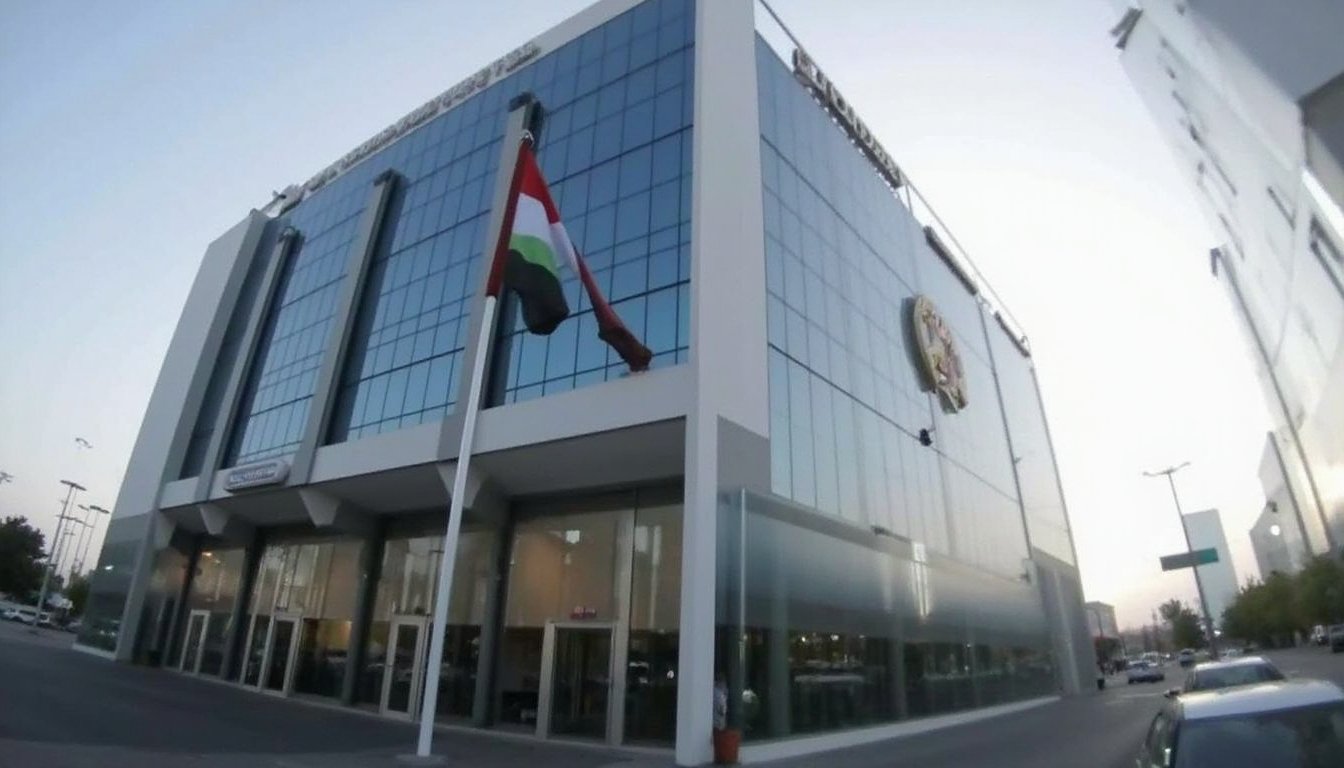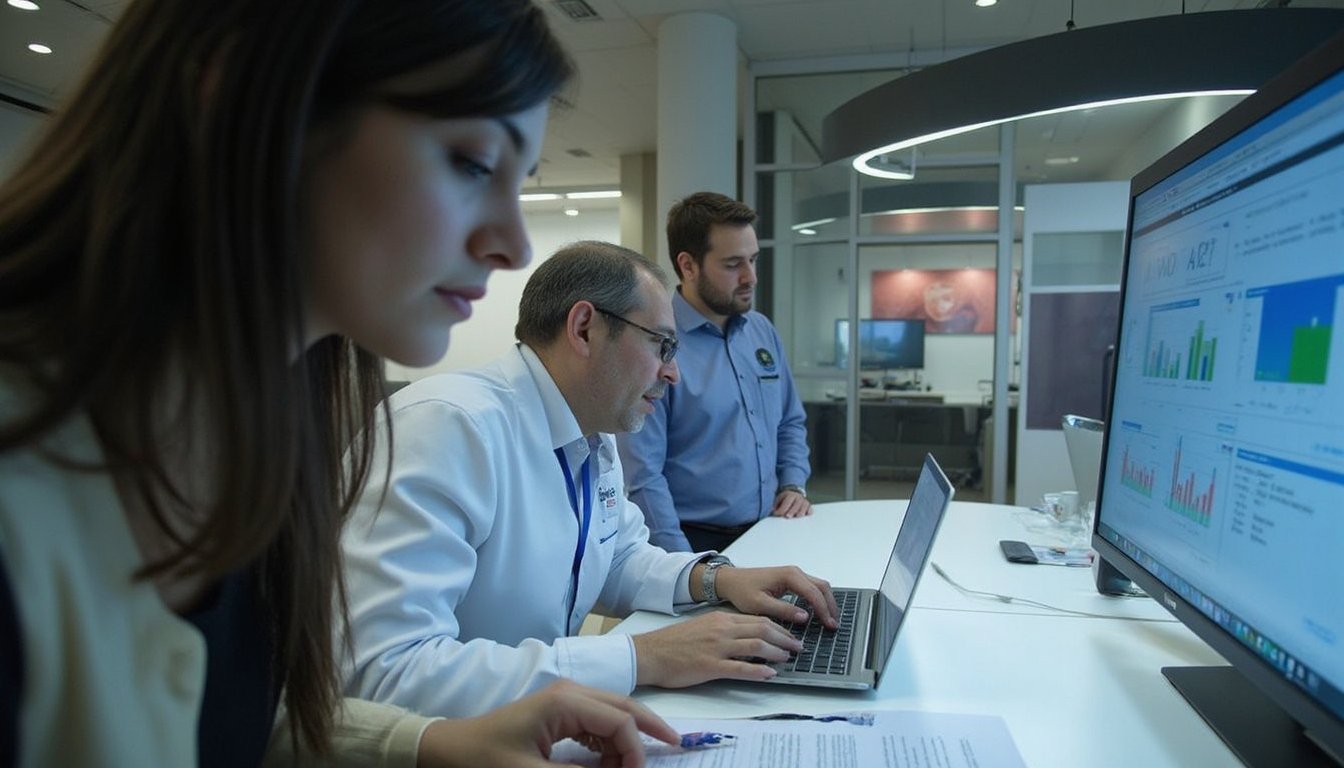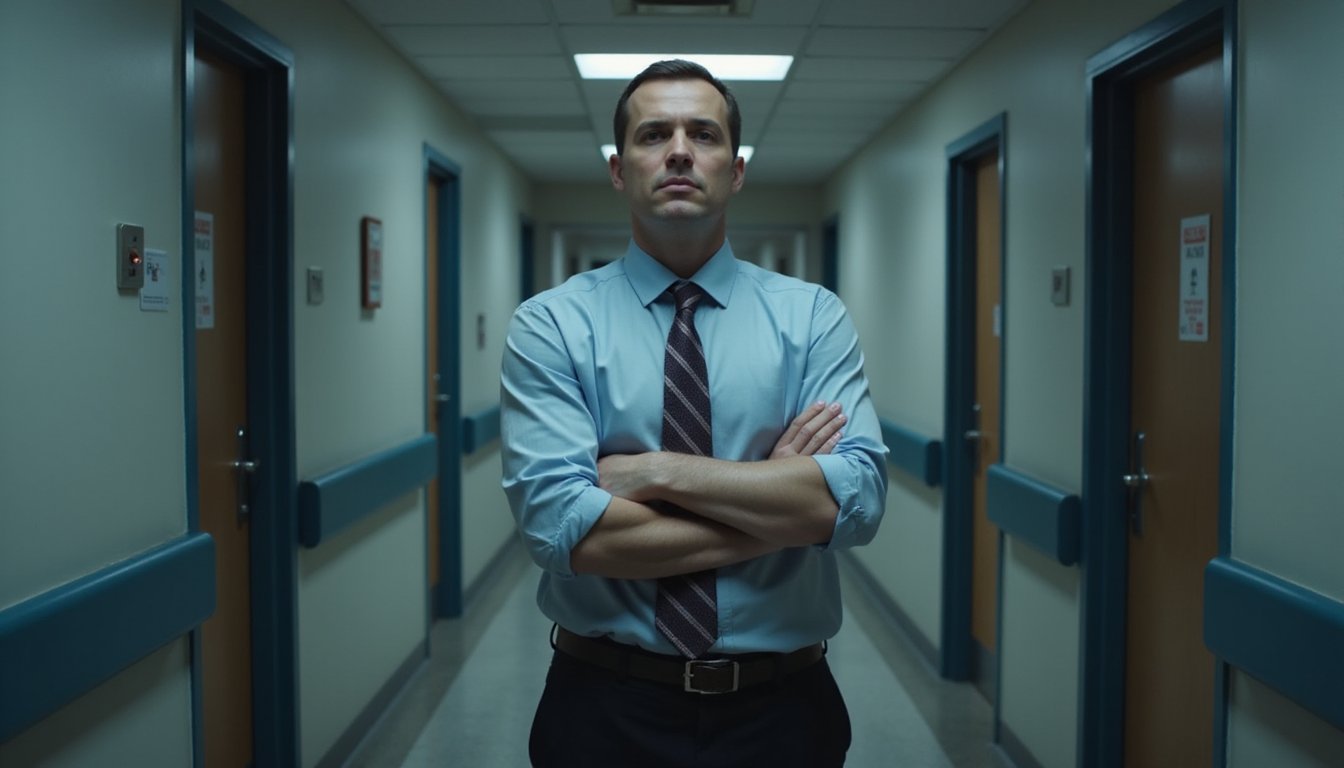Dubai’s healthcare system operates under a three-tiered regulatory framework, with primary control held by the Dubai Health Authority (DHA). You’ll find DHA oversees 1,500+ healthcare facilities, while strategic direction comes from Sheikh Mohammed bin Rashid Al Maktoum and operational execution through Dubai Municipality and Dubai Academic Health Corporation. The system features a mixed-financing model split between private employers (48%) and government (39%), with strict regulatory enforcement and AED118 billion in planned investments through 2027. The framework’s complexity reflects Dubai’s commitment to thorough healthcare governance.
The Three-Tiered Regulatory Framework

Dubai’s healthcare system underwent a significant transformation in 2025 with the introduction of Law No. (5), establishing a thorough three-tiered regulatory framework. You’ll find major authorities like the Dubai Health Authority, Dubai Municipality, and Dubai Academic Health Corporation at the helm of this public health framework, guaranteeing comprehensive oversight across all sectors. The law emphasizes disease prevention and control as key priorities for all healthcare providers. Healthcare providers are required to notify authorities immediately when encountering suspected cases of communicable diseases. The framework includes strict monetary penalties for healthcare facilities that violate regulations, with fines reaching up to AED 1,000,000 for organizations.
The system’s strength lies in its mandated cooperation between government and private entities, implementing integrated healthcare mandates that align with international standards. You’re now protected by a structure that came into effect 90 days post-publication, replacing conflicting local legislation while seamlessly integrating with federal laws like Federal Law No. 6 of 2023. This coordinated approach ensures uniform standards across health zones, including Free Zones, creating a cohesive healthcare ecosystem that serves all residents.
Power Distribution Among Healthcare Authorities
While the Dubai Health Authority (DHA) maintains central oversight of 1,500+ healthcare facilities, power distribution in Dubai’s healthcare system operates through distinct yet interconnected regulatory bodies.
You’ll find the DHA establishing licensing standards and managing digital health initiatives, while the Dubai Healthcare City Authority (DHCA) exercises autonomous control within its free zone. The Ministry of Health and Prevention (MoHAP) influences the system through federal policies and cross-emirate standards. This creates a three-tiered framework where each authority serves specific functions in healthcare infrastructure planning. The DHA has successfully unified 9.5 million patient records across its facilities, demonstrating its effectiveness in implementing large-scale healthcare initiatives. Healthcare professionals must pass DHA Prometric exams to practice within Dubai’s jurisdiction. The system is further enhanced by MoHAP’s smart auditing system for evaluating healthcare facility engineering plans.
You can see this division most clearly in licensing practices, where DHA’s jurisdiction covers Dubai proper, DHCA oversees its free zone independently, and MoHAP coordinates national initiatives. This structure enables specialized oversight while maintaining coordinated development of Dubai’s healthcare ecosystem.
Key Decision Makers and Leadership Roles

Dubai’s healthcare leadership operates through a clear hierarchical structure, with His Highness Sheikh Mohammed bin Rashid Al Maktoum setting strategic direction and His Highness Sheikh Hamdan bin Mohammed bin Rashid Al Maktoum supervising broad sector reforms. You’ll find regulatory execution primarily distributed between DHA Director General Awadh Al Ketbi and Dubai Health CEO Dr. Amer Sharif, who coordinate with MoHAP’s senior officials to implement unified policies and digital transformation initiatives. Under Al Ketbi’s leadership, Dubai has evolved into a global medical destination through strategic collaborations with international healthcare brands. A significant aspect of their governance includes the deployment of integrated physician practice models to enhance patient safety and clinical care management. The system’s effectiveness relies on strong public-private partnerships, with executive leadership from private hospital groups working under regulatory oversight to influence care delivery standards and innovation adoption. This robust leadership framework oversees a healthcare budget of AED 5.745 billion, representing 8% of the federal budget allocation.
Core Regulatory Power Structure
Three key regulatory bodies form the backbone of Dubai’s healthcare governance structure in 2025: the federal Ministry of Health and Prevention (MOHAP), the Dubai Health Authority (DHA), and the Dubai Healthcare City Authority (DHCA).
You’ll find their jurisdictions clearly defined, with MOHAP maintaining federal oversight of international accreditation standards and pharmaceutical regulations. The DHA enforces patient protection protocols within Dubai proper, while DHCA independently regulates the Healthcare City free zone. The Emirates Drug Establishment has taken over significant responsibilities from MOHAP for medical product control as part of recent regulatory reforms. The DHA maintains strict oversight through professional conduct standards for all licensed healthcare providers.
| Regulatory Body | Primary Jurisdiction | Key Powers |
|---|---|---|
| MOHAP | Federal UAE | Pharmaceutical control, national directives |
| DHA | Dubai Mainland | Facility licensing, professional credentials |
| DHCA | Healthcare City | Free zone operations, independent standards |
| EDE | Federal UAE | Medical product regulation |
| DHA Sectors | Dubai Mainland | Operational implementation |
Executive Leadership Hierarchy
Building upon the regulatory framework, a sophisticated executive leadership structure guides Dubai’s healthcare system in 2025. You’ll find Dr. Amer Ahmad Sharif as CEO of Dubai Health at the helm, supported by a strategic C-suite including Clinical, Digital/AI, and Financial officers who drive system-wide transformation.
The Dubai Health Executive Team coordinates across business, medical, and academic domains while fostering industry collaboration through initiatives like the HIMSS Executive Summit. Human capital development remains central, with the Dubai Health Leadership Academy, partnered with Oxford University, training future healthcare leaders. The structure integrates multiple decision-making bodies, from MBRU’s Board to Dubai Healthcare City Authority’s C-suite, ensuring aligned governance. This executive framework enables rapid implementation of visionary directives, particularly in digital health and integrated physician practices. Leadership effectiveness is demonstrated through the successful execution of 37 AI initiatives that enhance patient experience and improve care access. A key focus has been placed on developing unified workforce planning to prevent siloed operations and enhance system-wide coordination.
Public-Private Partnership Governance
A complex interplay of public and private leadership drives Dubai’s healthcare governance in 2025, with DHA serving as the primary regulatory authority while Dubai Health independently manages public facilities. You’ll find public private collaboration dynamics shaped by DHA’s partnerships with GEEO and global healthcare leaders, ensuring knowledge exchange and strategic alignment across sectors. Private facilities consistently deliver shorter wait times compared to public options, reinforcing their vital role in the healthcare ecosystem.
The system’s operational efficiency targets are monitored through integrated frameworks, with private employers contributing 48% of healthcare spending while government funding accounts for 39%. DHA’s coordination with MOHAP and EHS creates multiple oversight layers, strengthening compliance and quality standards. The EJADA initiative and mandatory insurance requirements demonstrate how regulatory mechanisms balance public health objectives with private sector participation, creating a unified approach to healthcare delivery and innovation.
Financial Control and Investment Oversight

Dubai’s healthcare funding reflects a mixed-financing model where private employers lead with 48% of total funding, while government sources contribute 39%, and out-of-pocket spending accounts for 13%. You’ll find the Dubai Health Authority (DHA) at the helm of financial oversight, governing over 1,500 healthcare facilities and directing essential investment strategies in digitalization and innovation. The sector’s financial dynamics show private health expenditure growing at a CAGR of 9.3% (2022-2028), outpacing public sector growth of 7.7%, while targeting AED118 billion in infrastructure and digital transformation investments by 2027. Financial reporting across these healthcare facilities adheres to IFRS standards as mandated by UAE regulations.
Funding Sources and Distribution
While the UAE federal government maintains a supporting role, Dubai’s healthcare funding milieu is primarily shaped by a substantial mix of emirate-level government financing (39%), private sector contributions (48%), and household spending (13%).
You’ll find Dubai’s resource allocation priorities and healthcare budgeting policies reflect a sophisticated funding ecosystem, with private sector investments projected to grow at a 9.3% CAGR through 2028.
- The Dubai emirate government controls 97% of public healthcare funding, while the federal government contributes 3%
- Private employers dominate funding through insurance schemes, covering 48% of total healthcare expenditure
- Insurance mechanisms account for 47% of total spending, targeting 98% population coverage
- Out-of-pocket payments have increased by 3% (2022-2023), reflecting growing cost pressures on households
Investment Strategy and Oversight
Through detailed regulatory frameworks and strategic investments, the Dubai Health Authority orchestrates a sophisticated oversight system that balances public and private sector interests. You’ll find strict financial controls governing operational performance, with providers required to maintain transparent balance sheets and meet specific equity criteria.
The system’s commercial expansion is driven by a mixed investment model, where government spending accounts for 39% while private employers contribute 48%. DHA’s AED118 billion investment plan (2023-2027) targets infrastructure modernization and digital innovation. You’re looking at stringent oversight mechanisms, including regular audits and compliance monitoring, with penalties for financial mismanagement ranging from fines to license suspension. The authority actively promotes FDI and PPP initiatives while maintaining careful control over speculative investment practices through annual financial disclosures.
Legal Enforcement and Compliance Mechanisms
The detailed legal framework governing Dubai’s healthcare system centers on Public Health Law No. (5) of 2025, which establishes clear enforcement mechanisms and compliance protocols across the sector. You’ll find the Dubai Health Authority (DHA) at the helm of enforcement, conducting incident investigations and digital security audits to guarantee adherence to regulations.
Dubai’s healthcare system operates under Public Health Law No. (5) of 2025, with DHA enforcing compliance through rigorous oversight and audits.
Key enforcement mechanisms include:
- Regular facility inspections with authority to issue warnings, penalties, or closure orders
- Administrative penalties ranging from suspension to revocation of licenses for non-compliant entities
- Mandatory compliance monitoring of health information systems and data privacy protocols
- Formal appeal procedures through appointed committees for challenged enforcement actions
The DHA’s oversight extends to both public and private healthcare providers, with strict enforcement of clinical standards, patient safety measures, and professional conduct requirements.
Strategic Vision and Implementation Bodies
As Dubai positions itself as a global healthcare hub by 2025, its strategic vision encompasses a thorough transformation guided by Sheikh Mohammed bin Rashid Al Maktoum and implemented through multiple specialized bodies.
You’ll find the system’s backbone rests on four key institutions: Dubai Health Authority (DHA) regulates providers and insurers, while Dubai Health manages public facilities through the Integrated Physician Practice model. At the federal level, MOHAP oversees strategic projects, and EHS operates select facilities in Dubai. This institutional transformation aligns with global best practices through partnerships like the Government Experience Exchange Office.
The vision prioritizes a future-ready, people-first approach, emphasizing preventive care, quality improvement, and digital transformation. You’ll see this reflected in the integration of public and private sectors, with sustainability and international benchmarking as core principles.
Frequently Asked Questions
How Do Patients Appeal Medical Decisions Made by Healthcare Providers?
You can file appeals through DHA’s digital portals or MOHAP’s unified platform, starting with the facility’s patient relations office. Your case will be assigned to an independent medical review committee that evaluates clinical data and insurance coverage under Law No. (5) of 2025. Patient advocacy programs guide you through the process, and you’ll receive real-time updates via multilingual platforms. If needed, you can escalate to higher regulatory boards or the Healthcare Tribunal.
What Role Do International Healthcare Organizations Play in Dubai’s System?
International healthcare organizations serve as essential partners in Dubai’s healthcare ecosystem. You’ll find they establish flagship centers, provide specialist expertise through doctor exchanges, and help set clinical standards. They’ve transformed Dubai into one of the region’s leading healthcare hubs, attracting 691,000+ medical tourists in 2025. Through joint ventures and partnerships, they’re actively involved in technology transfer, research collaboration, and medical education while ensuring compliance with global accreditation standards.
Can Residents Choose Between Public and Private Healthcare Facilities Freely?
Yes, you can freely choose between public and private healthcare facilities in Dubai, but your access depends on your insurance coverage and provider network availability. You’ll need to maintain valid DHA-approved health insurance to exercise this choice. While you have flexibility in selecting facilities, your insurance plan might restrict which providers you can visit. Public hospitals typically charge higher fees for expatriates, while private facilities offer more extensive services but at premium rates.
How Are Medical Malpractice Disputes Resolved in Dubai’s Healthcare System?
If you face medical malpractice in Dubai, you’ll initial work through internal hospital complaint departments. Unresolved cases move to the DHA’s Medical Liability Committee, which enforces healthcare quality standards through binding decisions. You can access private dispute resolution options like mediation or arbitration for faster settlements. If still unsatisfied, you can pursue legal action through Dubai Courts. The process is supported by NABIDH’s digital tracking system for transparent case management.
What Happens if Healthcare Providers Fail to Meet Digital Transformation Requirements?
If you fail to meet digital transformation requirements as a healthcare provider in Dubai, you’ll face severe consequences. You’ll risk license suspension, monetary penalties, and exclusion from NABIDH health records platform. You’ll encounter increased data security risks due to disconnection from unified systems, and patient privacy concerns may lead to legal prosecution under UAE Health Data Law. In addition, you’ll lose access to insurance payments, government incentives, and AI-enabled care programs.








